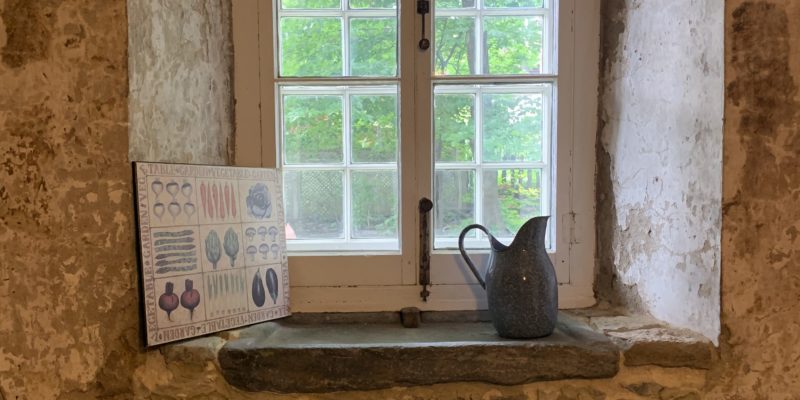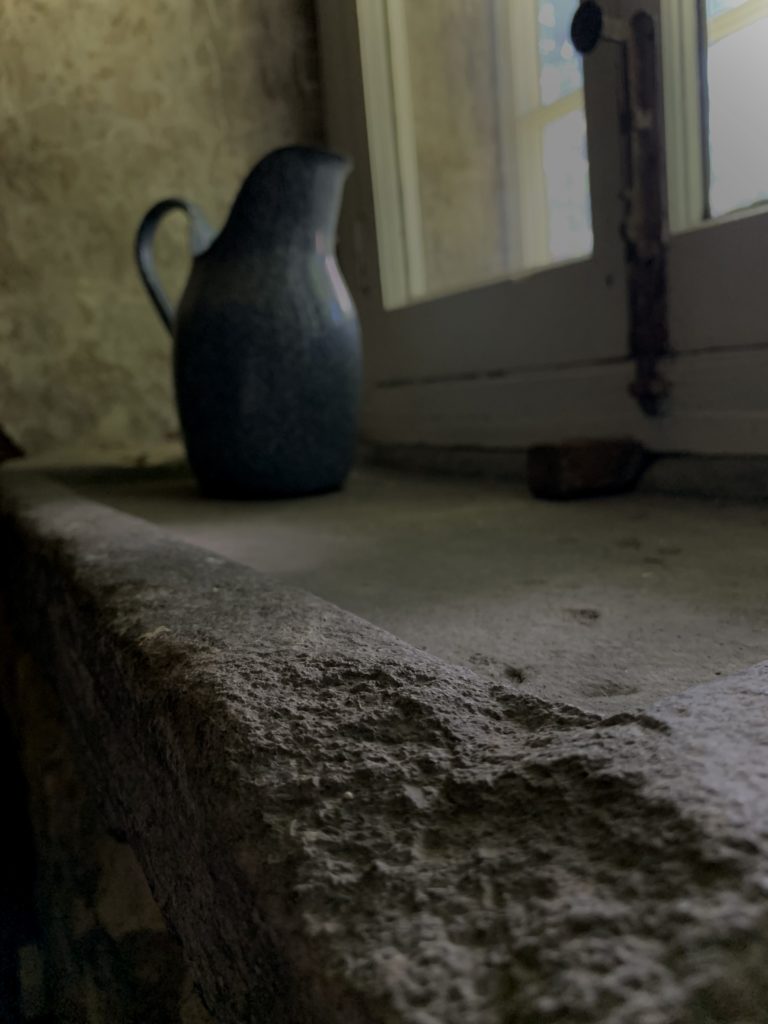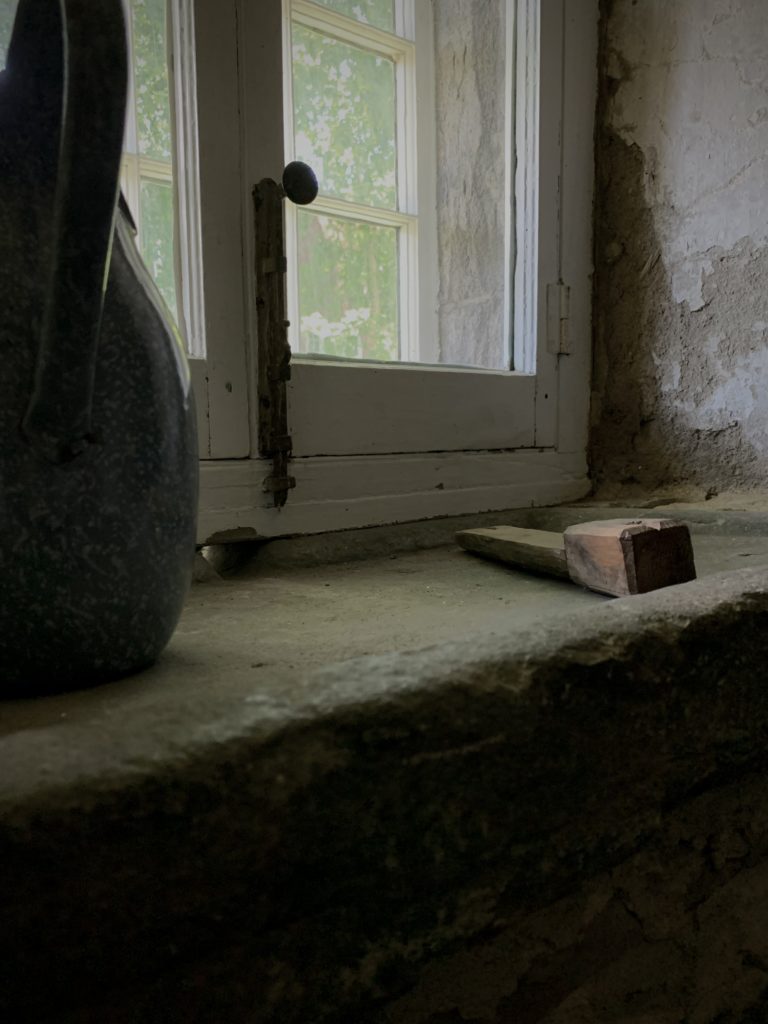Written by Delia Oltean –
The branches feeding the fire crackle softly around the house and mingle with the sound of water bubbling in a large pot over the fire. It is mealtime and along with the soup, some vegetables need to be washed. Under a window is a large, somewhat hollow stone: the sink.
If you go back in time and follow the popular Latin, you will realize that the word “évier” (sink) originates from the word “aquarium”, which refers, according to Le Petit Robert, to “eau” (water). In fact, kitchen sinks have existed for a long time and have changed shape over time, adapting to the needs and technologies available. Visible in French castles dating back to the Middle Ages, the sink was already used “to discharge outside the water used to wash dishes” (Dictionnaire raisonné de l’architecture française du XIe au XVIe siècle/Évier, 2014, par. 1). This kitchen element consisted of a hollowed-out stone, usually placed in front of a window. A hole was drilled in the wall from which the water used for washing dishes and fruit and vegetables flowed out.
Since running water was not yet available at the time of the construction of the Hurtubise House in 1739, the water used for cooking was drawn by hand and contained in a pitcher or bucket (Varin, 1991, p. 50) before being used. Once soiled, the water was drained through the hole in the wall before being recovered and used for other purposes such as the maintenance of the vegetable garden. In order not to leave a permanent hole in the wall of the house, a wooden peg covered the hole when it was not in use (Séguin, 1972, p. 207). It is not uncommon to find that the “évier” (sink) was also called a “lévier” or even “lavier” (Dunn, 1880).
It was not until the 19th century that some wealthier families were able to build sinks with pumps connected to them, which greatly facilitated access to water. Initially made of stone, the late 1800s saw the diversification of sink construction materials, with pressed steel and even enamelled metal replacing stone (Varin, 2007, p. 53). Taps also added to the comfort of the kitchen, allowing the use of running water.
The Hurtubise House has retained its stone sink for a very long period due to the delay in the installation of running water by the family. Despite the modern plumbing used today, it is possible to see this interesting feature in its original state.
Sources:
- Dictionnaire raisonné de l’architecture française du XIe au XVIe siècle/Évier. (7 février 2014). Dans Wikipedia. https://fr.wikisource.org/wiki/Dictionnaire_raisonn%C3%A9_de_l%E2%80%99architecture_fran%C3%A7aise_du_XIe_au_XVIe_si%C3%A8cle/%C3%89vier
- Dunn, O. (1880). Glossaire Franco-Canadien et vocabulaire de locutions vicieuses usitées au Canada. https://www.gutenberg.org/files/13230/13230-h/13230-h.htm
- Évier, Le Petit Robert, https://petitrobert12.lerobert.com/robert.asp
- Séguin, R-L.(1972). L’habitation traditionnelle au Québec. Les Cahiers des dix. https://www.erudit.org/fr/revues/cdd/1972-n37-cdd01426/1025297ar.pdf
- Varin, F. (2007). Leçons de plomberie. https://www.erudit.org/en/journals/continuite/2007-n112-continuite1055840/17492ac.pdf
- Varin, F. (1991). Les cuisines anciennes. https://www.erudit.org/fr/revues/continuite/1991-n51-continuite1052517/17732ac.pdf



